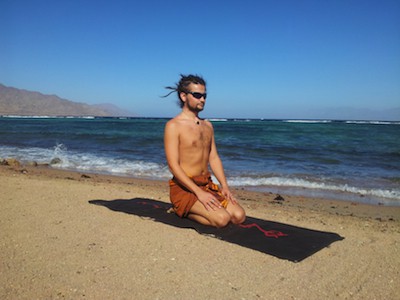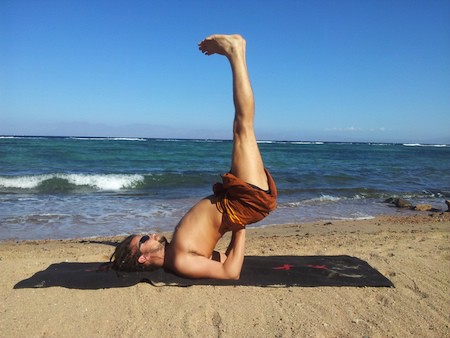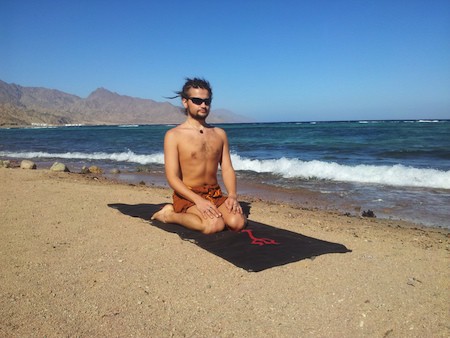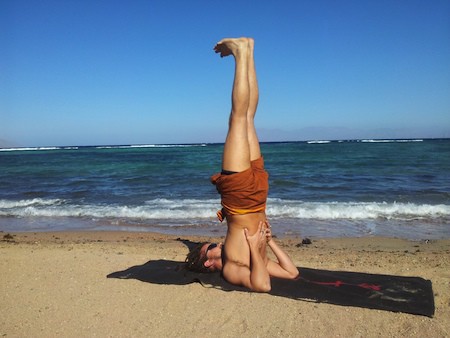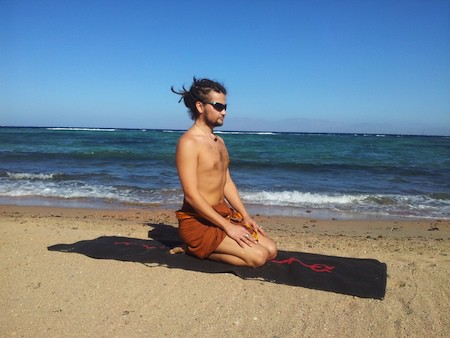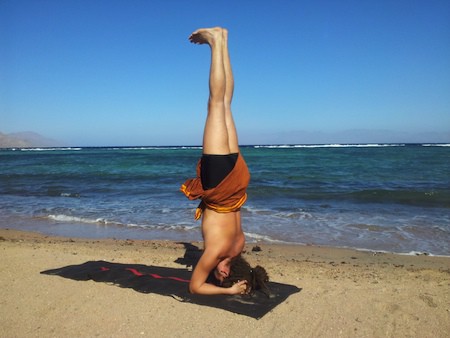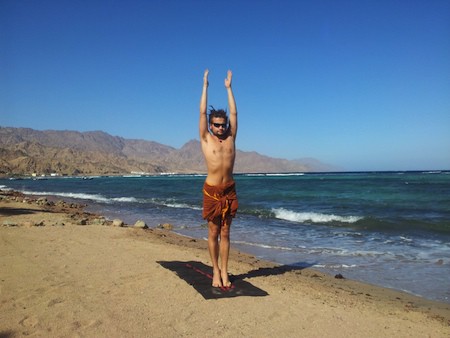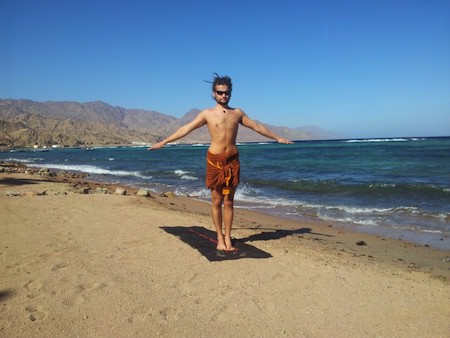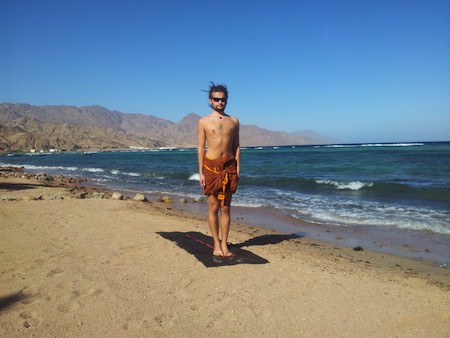All the vessels in our circulation system are arranged in somewhat the same and somewhat completely different way. Common for all the vessels is the fact that the vascular wall consists of three layers: an outer connective layer, delimiting the vessel from surrounding tissues and providing elasticity of the vessel, a middle layer, muscular, that allows the vessel to contract and relax, changing its tone and diameter, and inner endothelium, which plays an important role in permeability of the vascular wall and its interaction with blood cells.
At the same time the vessels throughout the vascular bed change their qualities and structure, adjusting to be able to carry out tasks assigned to them at this stage.
The largest vessels - the aorta and its major branches – are the first to take the blow of blood ejected from the left ventricle and should be highly elastic, that is, to be able to return to its original shape after stretching. Therefore, they are called elastic vessels. They have the most developed outer, connective layer.
The smaller arteries (arterioles) have a very developed middle, muscular layer and, therefore, able to compress strongly, providing resistance to the flow of blood. Due to this quality, they are called resistive vessels. These small strong arteries contribute greatly to the formation of system blood pressure; they can also restrict the entry of blood into the capillaries, thereby reducing blood flow to tissues. Small resistive vessels is one of the objectives of pranayama practice: level of carbon dioxide in the blood increases during breath detention, which has a relaxing effect on small arteries, and thus increases the level of capillary blood flow.
Further, small arteries form into the exchange vessels. This name was given to the capillaries, because processes of gas exchange between blood and tissues take place here. In order to move gases through the vascular wall as quickly as possible, the nature created single-walled capillaries: there is no external or muscle layers, a capillary wall consists of a single endothelial layer, easily permeable for gases and other substances. In addition, the thin capillary wall has fenestries - openings through which immune cells may migrate from the bloodstream into the tissues and vice versa.
Finally, after the capillaries the next functional class of vessels goes which is called volume. They start as small veins, which are collected into the capillaries, then, increasingly enlarging, veins go to the heart and flow into the right atrium - thus venous blood re-enters the process of blood circulation and goes to the lungs to get enriched with oxygen and give out carbon dioxide into the atmosphere.
Why the veins are called volume vessels? The fact is that the veins contain the main volume of blood - about 70% of the circulating blood at one time stays in the venous bed. Veins play the role of a depot, storage of blood. It is necessary in case when some organs or tissues require an increased blood supply, for example, during exercises the blood flow is redistributed in favor of the muscles, and while bleeding the body strives to provide a sufficient supply of blood to vital organs - brain, heart and kidneys. In order to do this, the tone of the veins increases, the blood is “squeezed out” of the veins, and moved to other parts of the vascular bed.
To fulfill functions of blood storage the veins possess a high ability to stretch. This characteristic makes them a weak point in the vascular system. Repeated stretching can ultimately lead to overstretching and deformation of the venous wall, and eventually varicosity appears.
Varicose Veins Disease (VVD) is a general weakness of venous walls. This phenomenon may occur in different parts of the body, in fact, being a consequence of one and the same problem. It could be varicosis of lower limbs or pelvis; venous weakness may also occur at the level of disorders in outflow from the cranial cavity; and finally, hemorrhoids is also a pathological expansion of the venous plexus surrounding the rectum.
At the moment, many authoritative researchers believe that the decisive role in the development of Varicose Veins Disease is played by genetic characteristics of connective tissue, which is a part of a venous wall. The main reason is the quantitative reduction of certain types of collagen in connective tissue or misbalance between them (M.Y.Yakovlev, 1994), which leads to excessive extensibility and insufficient strength of the venous wall.
In addition, some predisposing factors have a great importance here significantly accelerating development of the disease:
1. Nature and conditions of work: long periods of standing or sitting greatly influence the process of venous stasis.
2. Pregnancy and labors: growing uterus increases the pressure in the abdominal cavity, causing compression of veins and impaired venous blood return from the lower limbs, pelvic cavity and abdominal cavity.
3. A constipation has a similar effect increasing the pressure in the abdominal cavity.
4. Lack of regular physical activity.
We should also focus on the Varicose Veins Disease of pelvic organs among women. Here, besides pregnancies and labors, an important role is played by methods of contraception (presence of an intrauterine device, an interrupted intercourse, and lack of orgasms negatively effect the venous circulation in small pelvis). In addition, menstrual irregularities and hyperestrogenemia adversely interfere with the regulation of vein vascular tone (V.G.Mozes, G.A.Ushakova, 2006), stimulate development of VVD and influence the weakness of pelvic muscles.
Dysfunction of venous valve apparatus plays not the last role at a certain stage of development of Varicose Veins Disease. It is well known that the veins have valves that facilitate the movement of blood in only one direction - towards the heart, preventing it from flowing back. If vein is expanding too much, cusps of the valves diverge from each other and begin to pass blood in the opposite direction, that is how a relative insufficiency of the valve is forming. The reverse flow of blood through the valve leads to a greater blood congestion and varicose veins, and varicose veins lead to an even greater insufficiency of valves. A pathological vicious circle is being formed where the situation maintains itself and becomes worse.
Further structural changes of the components of vascular wall are forming, as well as an irreversible varicosity formation. Hypoxia of venous wall caused by stagnation of blood in the vessel lumen damages the endothelium and leads to restructuring of all the components of the vessel wall (T.A. Gadzhieva, 1986).
Before we proceed directly to considering methods of yoga therapy, let’s remember what mechanisms improve venous outflow, and prevent development of varicose veins.
What makes the blood to move towards the heart, especially up from the legs and pelvis, as in this case, the blood has to overcome the force of gravity? It is clear that valve apparatus does not allow the blood to move in the opposite direction, but what makes it flow upwards to the heart?
There are several mechanisms of venous return. The first is the muscle pump (especially of lower limbs). Every time we make a step, muscles of the hips and shins contract, the veins inside are compressed and blood is squeezed up along the veins towards the heart.
The second mechanism of venous return is a suction effect that occurs in the thorax during inspiration. During inhalation, the pressure in the thorax decreases; it sucks the blood into the large veins near the heart, improving the blood return to the heart from the peripheral veins. This mechanism is enhanced by using techniques of Ujjayi during inhalation, as this technique contributes to an even greater decrease of pressure in the thorax during inspiration.
While creating “an anti-varicose” yoga therapeutic algorithm you should exclude techniques contributing to venous congestion and limiting normal mechanisms of venous return. Standing poses with long holding time should be limited, as they deactivate the muscle pump in the lower limbs. Standing poses with holds for longer than 10 seconds are undesirable. By itself, the practice of standing poses will be very useful, but without long-time holds, that is, different possible variations of Surya Namaskar using standing poses in a dynamic mode with very short holds. This approach will strengthen the muscle pump of the lower limbs and would not block it.
Practice of seating asanas should be limited as well, as they restrict blood flow in the veins of lower extremities (Virasana, Padmasana, Vajrasana, Gomukhasana and so on).
There is a therapeutic approach in yoga that uses these asanas, but in this case these asanas should be hold only for short time (no longer than for 20-30 seconds) and alternated with inverted asanas that are fixed for 30-60 seconds or more.
One sequence, as an example:
It is assumed that a short time restriction of venous blood flow that happens in sitting asana gently stretches muscle elements of vessel walls, causing them to increase their tone; while practice of inverted asanas right after that actively promotes blood return and volume unload of the veins. However, this approach is rather complicated to be realized on a practical level and mainly suits for the individual work.
In the practice one should avoid holds of asanas that significantly increase pressure in the abdominal cavity, first of all, Ardha Navasana and so on. Asanas focused on abdominal muscles should be performed in a dynamic mode only; they are well combined with Ujjayi on inhale, additionally improving venous return due to the work of breathing. It should be also remembered that a number of deep backbends on the abdomen (such as Dhanurasana, Shalabhasana) also greatly increase the intra-abdominal pressure (Bhole, Karambelkar, 1971).
Now we need to include into the practice some techniques that have beneficial influence on the process of venous outflow.
Inverted asanas contribute a lot to unloading the veins of lower extremities and pelvis. Combinations of upside down poses and dynamic movements of the feet (rotation, flexion, extension in the ankle joints), performance of Uddiyana Bandha in inverted asanas – all these are good for venous and lymphatic system of the legs. Venous system of the pelvis benefits from twisting variations of inverted asanas, such as Parsva Sarvangasana and others.
Abdominal manipulations (Uddiyana Bandha and Nauli) are powerful vacuum techniques that create negative pressure in the cavities of the body and therefore increase the venous return. The most powerful vacuum technique is Madhyama Nauli.
It is important to use breathing techniques in a specific mode aimed to improve venous return. To strengthen the suction action during inhalation a Full Breath should be practiced (with a preliminary study of the articular and muscular apparatus of the chest, for more info see this article (Russian) as well as Ujjayi technique should be mastered during inhalation.
Full Breath and Ujjayi during inhale can be effectively used in the simplest exercises for beginners and older people with different concomitant diseases:
Another example is for a more trained person with varicose veins of the pelvic organs: Urdhva Mukha Shvanasana on inhale with Ujjayi, flow into Adho Mukha Shvanasana on exhale without Ujjayi, Uddiyana Bandha in the end of exhalation (to empty the venous system of the pelvis it is raised to a level higher than the heart, venous outflow is facilitated by gravity and by the vacuum action of Uddiyana Bandha). Uddiyana Bandha in Adho Mukha Shvanasana unloads pelvic veins and can be performed repeatedly throughout the complex.
Thus, therapeutic yoga practice for varicose veins has a predominantly dynamic character, with great number of standing asanas, but with holds minimal in time. Abdominal manipulations, including those done in inverted asanas variations (Adho Mukha Shvanasana, Viparita Karani Mudra, etc.) can be widely used. Ujjayi on inhale can be used throughout the session; Ujjayi on exhale is not used or used in a very soft variant. Sitting poses for breathing and meditative practices should be chosen in a way to avoid influencing venous return, i.e. to avoid clamping the legs, use a cushion, a brick, or a chair. Sama-Vritti variant is preferred among the respiratory proportions (for more details see this article (Russian).
Besides a proper organized practice, attention should be paid to a general mode of life and work. If your work requires staying in a standing or sitting position for a long time, then at least once in 45-60 minutes you should stand up and walk down and up the stairs to activate the muscle pump. Avoid staying in hot rooms, baths, saunas, on the beach under the hot sun (in such conditions the vessels expand, and the veins expand in the first turn). With Varicose Veins of the lower extremities a contract shower on the feet helps. Skiing and swimming would be the most suitable among the sports.
An important auxiliary method can be a usage of herbs that increase tone of the veins (Aésculus, Córylus, Argimonia eupatoria, gotu kola), strengthen the vascular wall due to the contents of Rutin and Vitamin C (Ruta graveolens, leaves of Ríbes nígrum, fruits of Sorbus aucuparia), and improve blood flow due to reducing blood clotting (Melilótus officinális, Filipéndula ulmária, Rubus idaeus, leaves and stems), stimulating the regeneration of connective tissue (Elytrígia répens, Pulmonaria officinalis, Equisétum arvénse).
One example of “anti-varicose veins” herbal mix:
Aésculus, flowers -2
Aésculus, fruits - 2
Córylus, leaf - 2
Argimonia eupatoria -2
Ruta graveolens -1
Ríbes nígrum, leaf - 3
Sorbus aucuparia, fruits - 2
Melilótus officinális - 1
Filipéndula ulmária - 2
Pulmonaria officinalis - 2
Mix. Grind. Take 1 table spoon of the herbal mix, add 0.5 liters of boiling water and boil for 3 minutes, leave for 30 minutes. Filter. Drink during the day in small portions. Use the herbal mix 2-3 times in a year for courses of 1 – 1.5 months.
Varicose veins disease is a disease responsive to a therapeutic practice of yoga. Well-organized practice, as a rule, gives very good results. Of course, it is impossible to restore the structure of the vascular wall that had already changed. But therapeutic practice of yoga can stop further progression of the process; in addition, it can significantly improve the quality of life: pain goes away from the legs and pelvic, swellings disappear. The main condition for success is a proper organization and regularity of the practice.
Artem Frolov is physician, yoga-therapyst, herbal-therapyst, director of Russian Yoga-Therapy Institute from St. Petersburg. His website: artem-frolov.spb.ru
Asanas demonstration: Konstantin Amrit (Odessa)



